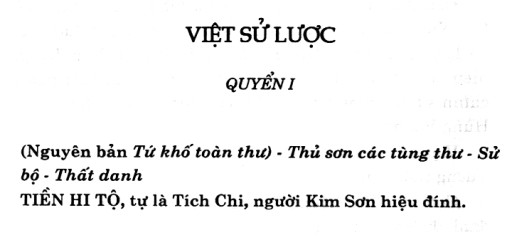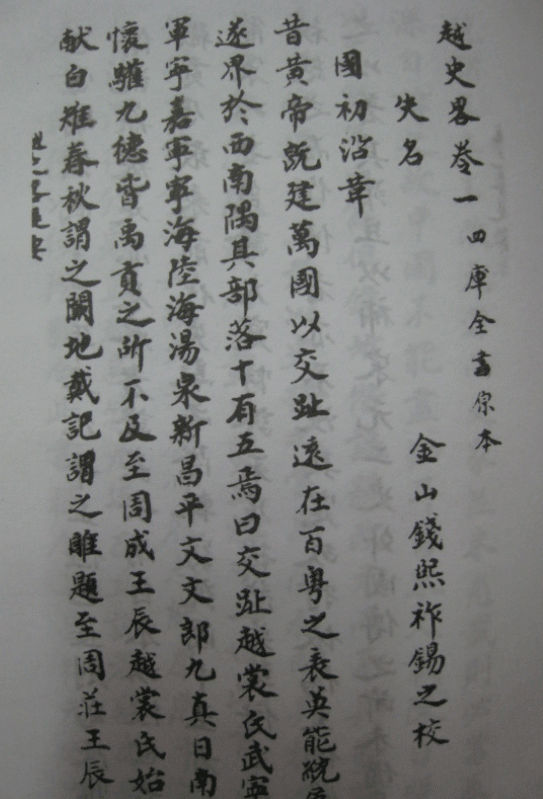Blogger Quach Hien has a nice response to this issue of how modern Vietnamese translations of the [Đại] Việt sử lược do not note that the original has the character “đôi” (she says it should be read “đối” – I’m not an expert on this, so I don’t know) instead of “hùng” in a passage on the earliest kings in the Red River Delta (i.e., they are called “Đôi vương” instead of “Hùng vương” in the original).
She argues that Trần Quốc Vượng and Nguyễn Gia Tường perhaps did not make note of this because they made their translations based on hand-written copies of the original, and that in these copies that character had already been changed from “đôi” to “hùng.” In the case of Nguyễn Gia Tường this may very well be true, because he stated that he was using a copy (bản sao). We have no way of verifying which character was in his copy, but certainly it is possible that it had “hùng” instead of “đôi.”
In the case of Trần Quốc Vượng, however, this does not appear to be the case. In Trần Quốc Vượng’s translation, the information about the text he used is clearly stated.
It says that it is from the Siku quanshu (四庫全書, Tứ khố toàn thư), and it also notes that it comes from the “Shoushan Pavilion Compilation” (守山閣叢書, Thủ sơn các tùng thư), and that it was proofread by Qian Xizuo (錢熙祚, Tiền Hi Tộ).
Qian Xizuo was a nineteenth-century scholar who published some works from the Siku quanshu in a collection he called the “Shoushan Pavilion Compilation.” This was printed numerous times. The image which I have here comes from a 1922 edition.
Quach Hien has provided an image from an existing hand-written copy of the [Đại] Việt sử lược. It indicates that the text is based on the original in the Siku quanshu and that it was proofread by Qian Xizuo.
However, it doesn’t say anything about the “Shoushan Pavilion Compilation” (Thủ sơn các tùng thư). So if Trần Quốc Vượng was using this hand-written copy, how did he know that it was based on the Siku quanshu version of the text as it was reproduced in the “Shoushan Pavilion Compilation”?
In other words, there is more information about where this text came from in the printed version than there is in the hand-copied version, and Trần Quốc Vượng has all of this additional information from the printed version in his translation (word-for-word the same).
Having said all this, I don’t have access to the hand-copied version which Quach Hien mentioned. All I have to base what I am saying on is the one image which she posted.
Does that version contain information somewhere else about the “Shoushan Pavilion Compilation” (守山閣叢書, Thủ sơn các tùng thư)?
If it does, then it is possible that Trần Quốc Vượng made his translation based on a hand-written copy. If he did, however, then that is just as unprofessional as changing a word and not telling your readers about it.
Published versions of the [Đại] Việt sử lược had been around for decades by the time Trần Quốc Vượng made his translation. If none exist in libraries in Vietnam today, it is nonetheless easily conceivable that some scholar had a copy of this in his private collection (especially given the close relations between Communist Chinese and North Vietnamese scholars in the 1950s). There was no need to use a hand-written copy, and I doubt that Trần Quốc Vượng did.


